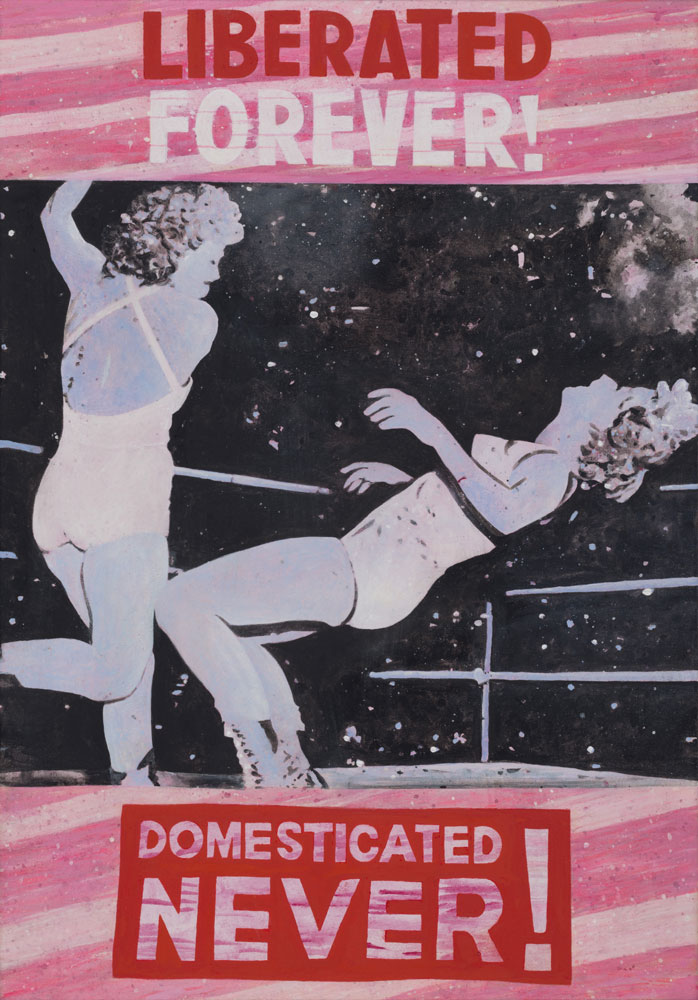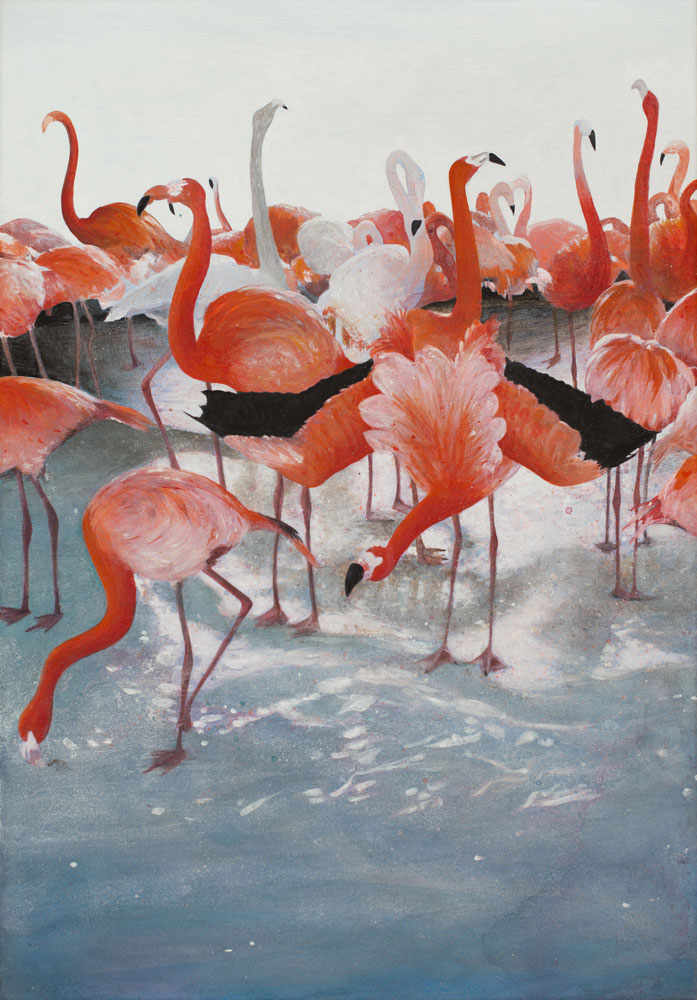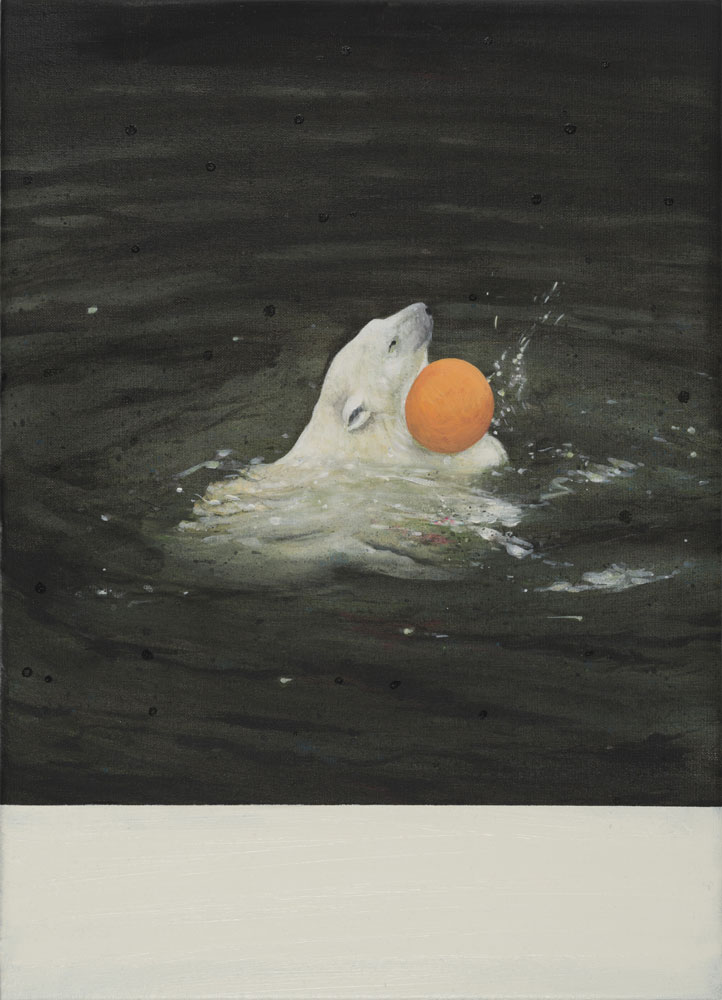In the last few years a group of paintings has been created which deals with postcard motifs. This was the reason for the invitation of the Lichtenberg Studios with the request if I would be willing to paint ten paintings about the district.
As a child I collected postcards. I grew up in the GDR. My parents had family, through friends and my father’s profession, he was a pastor, numerous contacts in socialist and western countries. So we received postcards from all over the world. Looking back, I had thought it was wanderlust and the restriction of the possibility to travel that encouraged me to collect postcards. But I think it was also unconsciously formal, creative and aesthetic reasons that fascinated me. So, parallel to the motifs, I was interested in the graphics on the back of the cards and the differently designed borders. My special pride was a multi-part map of Montreal airport in the form of a four-leaf clover with bright red edges and a polar bear map of Kamchatka. The motif of the ice landscape was square, the map a portrait format with a white stripe at the bottom of the map. The Soviet cards were, in contrast to the brightly coloured glossy cards from the West, mostly pale and dull with very strange colour shifts. The colours looked washed out or bleached by the sun. But this special colourfulness also had its special charm.
On my expeditions through Lichtenberg I decided on the following motives: the swimming hall Sewanstraße, a flower shop in Neu-Hohenschönhausen, flamingos in the zoo Friedrichsfelde, a house at the former swimming pool Rummelsburg, ducks at the Malchower See, the trotting race track Karlshorst, the skater track Fennpfuhl, a photograph from the Stasi museum Normannenstraße, the Dong Xuan Center and the allotment garden “Am Hechtgraben” at the terminus of the tram Falkenberg.
Despite the obviousness of all motifs, stories that tell about Lichtenberg are hidden behind every motif. From time to time my pictures develop a life of their own, so that in the end one can no longer tell what is fiction or documentation, for example with the motif of the women in the boxing ring, which I found in an absurd book in the Stasi museum in Normannenstraße as an example of western decadence. In my painting this motif appears in combination with the writing “Liberated forever – Domesticated never”. This logo is taken from a towel in the Dong Xuan Center, the largest Asian market in Berlin. In the painting of the flamingos the strange light is striking. It was taken after a snapshot, in the winter quarters of the birds in the zoo Friedrichsfelde, flooded with artificial light. For me the picture is in correspondence with the wonderful paper wallpapers painted with exotic birds in the Friedrichsfelde castle. The detached small building of a flower shop in Neu-Hohenschönhausen on a gloomy winter day in front of a prefabricated concrete slab building tells about the cohabitation of the inhabitants in a new development area, its shopping facilities and about how to make life a little more beautiful for oneself. It is not possible to depict the many facets of Lichtenberg on the basis of ten paintings, but the painterly examination of the medium of the picture postcard gave me the opportunity to capture a piece of everyday life in Lichtenberg.



